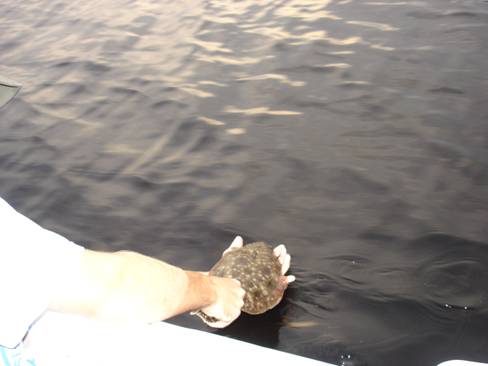


Current research on southern flounder population dynamics
In 2005, we initiated a two-year tag-return experiment in the New River gillnet fishery designed to provide direct estimates of harvest rate and information on population demographics specific to this large river fishery. We hope to provide annual estimates of the harvest rate for southern flounder in two consecutive years and collect data on the size and age structure of the catch, maturity schedules, and sex ratios. By providing independent estimates of harvest rate, North Carolina fishery managers will be able to evaluate the short-term success of recent management restrictions.
Preliminary results indicate that during both years, annual estimates of F (F2005 = 2.00, 95%CI = 1.01 – 3.00; F2006 = 2.30, 95%CI = 1.28 – 3.33) exceeded the short term management target (F = 0.95). The seasonal pattern of harvest was similar between years, with peak fishing mortality during June and July followed by declining F through November. A yield per recruit (YPR) analysis indicated that yield may be more robust to high levels of F if age-at-entry were delayed until age 2. Among potential biases, our model may have been influenced most by any violation of the mixing assumption. However, analysis of residual patterns suggested that our fishing mortality estimates may actually have been biased low during both years. Our findings reveal that, despite recently amended fishery regulations, fishing mortality in the North Carolina southern flounder gill net fishery still has the potential to greatly exceed targeted levels, which may delay stock recovery.


